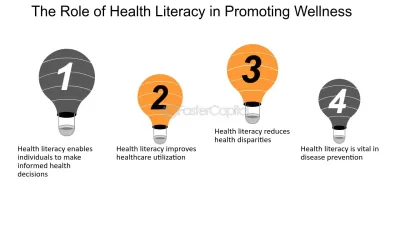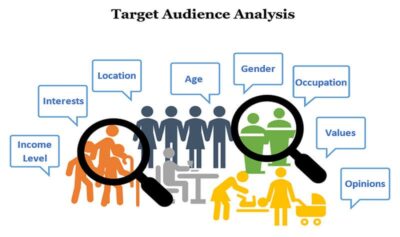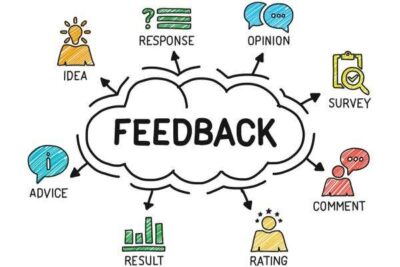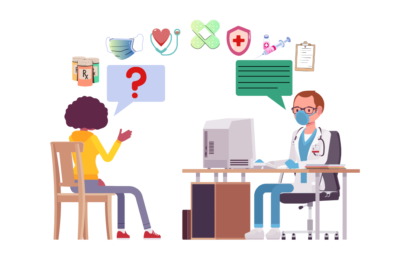Table of Contents
Patient education campaigns are a crucial component of connecting with patients and building a better-informed community. Such campaigns can help you improve public perception, patient satisfaction, and health outcomes, all of which contribute significantly to increased brand awareness, leads, and conversions. By providing patients with accurate, easy-to-understand information, you can empower them to take control of their health and make informed decisions.

There are many different strategies you can use to create effective patient education campaigns. For example, you might leverage targeted marketing campaigns to reach specific patient populations and engage them with relevant information. You might also invest in patient education materials like brochures, videos, or infographics that can be shared in waiting rooms or online. Additionally, you might partner with healthcare providers to offer educational seminars or workshops on topics like healthy living or disease prevention.
Whatever strategy you choose, it’s important to keep the patient’s needs and preferences in mind. Patients are more likely to engage with educational materials that are easy to understand, visually appealing, and relevant to their specific health concerns. By taking the time to create high-quality, patient-centered educational content, you can build trust and establish your healthcare organization as a reliable source of information and support.
Overview of Patient Education Campaigns
Patient education is an essential component of healthcare marketing. It involves providing patients with information about their medical conditions, treatment options, and ways to manage their health. Patient education campaigns can help healthcare providers improve patient outcomes, increase patient satisfaction, and reduce healthcare costs.
Defining Patient Education
Patient education is the process of providing patients with information about their health, medical conditions, and treatment options. It involves communicating complex medical information in a way that patients can understand and use to make informed decisions about their health. Patient education can take many forms, including written materials, videos, online resources, and one-on-one counseling.

Goals and Objectives
The goals of patient education campaigns are to empower patients to take an active role in their healthcare, improve patient outcomes, and reduce healthcare costs. Patient education campaigns can help patients better understand their medical conditions, treatment options, and ways to manage their health. This can lead to improved patient outcomes, such as better control of chronic conditions, reduced hospital readmissions, and fewer emergency department visits.
Patient education campaigns can also help healthcare providers reduce healthcare costs by improving patient adherence to treatment plans, reducing unnecessary tests and procedures, and preventing complications.
Developing Effective Patient Education Campaigns
When it comes to developing effective patient education campaigns, there are several key factors to consider. By taking the time to analyze your target audience, craft a compelling message, and utilize multimedia effectively, you can create campaigns that resonate with patients and drive engagement.
1. Target Audience Analysis
The first step in developing an effective patient education campaign is to conduct a thorough analysis of your target audience. This involves gathering data on patient demographics, health concerns, and communication preferences. By understanding your audience, you can tailor your message and delivery to meet their specific needs and preferences.
One effective way to gather data on your target audience is to conduct surveys or focus groups. This can help you gather valuable insights into patient attitudes, behaviors, and preferences. You can also use data analytics tools to gather information on patient demographics, health concerns, and online behavior.

2. Message Crafting
Once you have a clear understanding of your target audience, the next step is to craft a compelling message that resonates with patients. This involves identifying key pain points or concerns that patients may have, and addressing them in a clear and concise manner.
One effective way to craft a compelling message is to use storytelling. By telling stories that illustrate the benefits of a particular treatment or procedure, you can help patients understand the value of your services and build trust.
3. Multimedia Utilization
Finally, it’s important to utilize multimedia effectively in your patient education campaigns. This can include videos, infographics, and interactive tools that help patients understand complex medical concepts.
One effective way to utilize multimedia is to create interactive patient education materials that allow patients to explore medical concepts in a hands-on way. For example, you could create an interactive tool that allows patients to explore the anatomy of a particular body part or system.
Delivery Channels and Tactics for Patient Education Campaigns
When it comes to delivering patient education campaigns, there are several channels and tactics that healthcare marketers can use to reach their target audience. Below are three popular options:
4. Digital Platforms
Digital platforms are a great way to reach patients where they are spending most of their time – online. From social media to email marketing, digital platforms offer a range of options for delivering educational content. One effective tactic is to create short, visually appealing videos that can be shared on social media or embedded on a website. Another option is to use email marketing to send regular newsletters that include educational content, tips, and resources.
5. Print Materials
While digital platforms are certainly popular, print materials still have a place in healthcare marketing, making an omnichannel approach to patient education campaigns critical. Brochures, flyers, and posters can be distributed in waiting rooms, mailed to patients, or handed out at community events. These materials should be visually appealing and easy to read, with clear calls-to-action that encourage patients to take action.

6. Community Outreach
Community outreach is another effective way to deliver patient education campaigns. This can include hosting events, partnering with local organizations, or even going door-to-door to distribute materials. The key is to identify the needs of the community and tailor the educational content accordingly. For example, a healthcare organization might host a workshop on healthy eating habits for families in a low-income neighborhood.
Measuring Patient Education Campaign Effectiveness
Once you have launched your patient education campaign, you need to measure its effectiveness to evaluate its success and make improvements. Here are three methods to measure the effectiveness of your healthcare marketing campaign.
7. Metrics and Analytics
One way to measure the effectiveness of your patient education campaign is through metrics and analytics. You can track metrics like website traffic, social media engagement, and click-through rates. By analyzing these metrics, you can see how your campaign is performing and identify areas for improvement.
For example, if you notice that your website traffic has increased since launching the campaign, you can assume that your campaign is resonating with your target audience. However, if your click-through rates are low, you may need to re-evaluate your messaging and calls to action.
8. Feedback and Surveys
Another way to measure the effectiveness of your patient education campaign is through feedback and surveys. You can gather feedback from patients and healthcare providers to see how they perceive your campaign and if it is changing their behavior.
You can use surveys to collect data on patient satisfaction, knowledge gain, and behavior change. By analyzing this data, you can see if your campaign is achieving its goals and identify areas for improvement.

9. Longitudinal Studies
Longitudinal studies are another way to measure the effectiveness of your patient education campaign. These studies track the same group of patients over an extended period to see if their behavior changes as a result of the campaign.
By conducting a longitudinal study, you can see if your campaign is having a long-term impact on patient behavior. This can be useful for evaluating the ROI of your campaign and making improvements for future campaigns.
In summary, measuring the effectiveness of your patient education campaign is crucial for evaluating its success and making improvements. By using metrics and analytics, feedback and surveys, and longitudinal studies, you can gather data to see how your campaign is performing and identify areas for improvement.
Regulatory Considerations in Patient Education Campaigns
Patient education campaigns are an essential component of healthcare marketing. However, it is important to adhere to regulatory considerations to ensure that the campaigns are compliant with relevant laws and ethical standards.
10. Compliance with Laws
Patient education campaigns must comply with all relevant laws and regulations, such as the Health Insurance Portability and Accountability Act (HIPAA) and the Federal Trade Commission Act (FTC). HIPAA regulations require healthcare providers to protect the privacy and security of patient information, including personal health information (PHI). Therefore, it is important to ensure that patient education campaigns do not disclose any PHI without the patient’s explicit consent.
The FTC regulates advertising in the healthcare industry and prohibits false or misleading claims. As such, patient education campaigns must ensure that all claims made are truthful and supported by scientific evidence.
11. Ethical Standards
In addition to complying with laws and regulations, patient education campaigns must also adhere to ethical standards. Ethical considerations in healthcare marketing include ensuring that the content of the campaign is accurate, informative, and relevant to the patient’s needs.
It is important to avoid using fear tactics or making exaggerated claims in patient education campaigns. Instead, focus on providing patients with factual information that can help them make informed decisions about their health.

Patient education campaigns should also respect the patient’s autonomy and right to make decisions about their healthcare. Therefore, it is important to ensure that the campaign does not pressure patients into making decisions that are not in their best interest.
Overall, regulatory considerations are an essential aspect of patient education campaigns in healthcare marketing. By complying with relevant laws and ethical standards, patient education campaigns can provide patients with valuable information that can help them make informed decisions about their health.
Challenges and Barriers
Patient education campaigns in healthcare marketing can be challenging due to various barriers that can impede the effectiveness of these campaigns. In this section, we will discuss some of the common challenges and barriers that healthcare marketers may face when developing patient education campaigns.
Cultural Sensitivity
Cultural sensitivity is an important aspect of patient education campaigns. Patients come from diverse cultural backgrounds, and it is crucial to understand their cultural beliefs, values, and practices to deliver effective healthcare services. Healthcare marketers must ensure that their campaigns are culturally sensitive and appropriate for their target audience. This can be achieved by conducting research and consulting with cultural experts to gain a better understanding of the target audience’s cultural background.
Health Literacy Levels
Health literacy levels can also pose a significant challenge for patient education campaigns. Patients with low health literacy levels may have difficulty understanding medical terminology and treatment options, which can result in poor health outcomes. Healthcare marketers must develop patient education campaigns that are easy to understand and use plain language to convey information effectively. Providing visual aids, such as infographics or videos, can also help patients with low health literacy levels understand complex medical information.

Resource Limitations
Resource limitations can also be a significant barrier to patient education campaigns. Healthcare marketers may face budget constraints, limited staff, or inadequate technology to develop and deliver patient education campaigns effectively.
To overcome these barriers, healthcare marketers can leverage low-cost and high-impact strategies, such as social media, email marketing, or patient portals, to disseminate information to patients. Additionally, partnering with community organizations or healthcare providers can help healthcare marketers reach a broader audience and maximize their resources.
In conclusion, patient education campaigns in healthcare marketing can face various challenges and barriers that can impede their effectiveness. Healthcare marketers must develop culturally sensitive, easy-to-understand, and cost-effective patient education campaigns to overcome these barriers and provide patients with the information they need to make informed decisions about their health.
Future Trends in Patient Education Campaigns
As healthcare marketing continues to evolve, patient education campaigns are becoming increasingly important. By providing patients with the information they need to make informed decisions about their healthcare, patient education campaigns can improve patient outcomes, reduce healthcare costs, and increase patient satisfaction. Here are some future trends in patient education that you should be aware of:
Technological Advancements
Advancements in technology are changing the way that patient education campaigns are delivered. With the rise of telemedicine and mobile health apps, patients can access educational materials from anywhere, at any time. Virtual reality and other immersive technologies can also be used to create engaging educational experiences that are more effective than traditional methods.
Personalized Education

Personalized education is becoming increasingly important in healthcare marketing. By tailoring educational materials to the specific needs of individual patients, healthcare providers can improve patient engagement and outcomes. Personalized education can be delivered through a variety of channels, including email, text messaging, and social media.
Collaborative Efforts
Collaboration between healthcare providers, patients, and other stakeholders is essential for effective patient education campaigns. By working together, healthcare providers can develop educational materials that are more relevant and effective. Patients can also provide valuable feedback that can be used to improve educational materials and delivery methods.
Overall, patient education campaigns are an important component of healthcare marketing. By staying up-to-date with the latest trends and technologies, among other patient education campaign strategies, healthcare providers can develop effective educational campaigns that improve patient outcomes and satisfaction.







